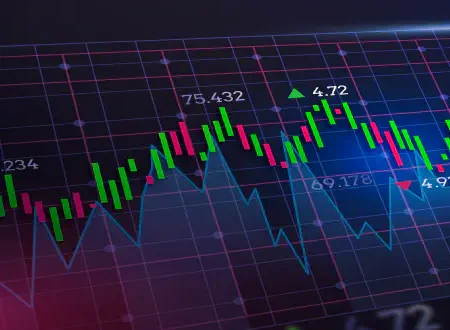Bitcoin, the world’s most popular cryptocurrency, uses a unique mechanism called “halving” to control its supply and maintain its value. But what exactly is halving, and when does it occur?
Halving is an event that occurs approximately every four years, or after every 210,000 blocks mined, in the Bitcoin blockchain. During this event, the block reward that miners receive for mining a new block is reduced by half. This reduction in reward has a significant impact on the supply and inflation rate of Bitcoin.
Since its inception in 2009, Bitcoin has undergone two halvings. The first occurred in 2012, reducing the block reward from 50 to 25 bitcoins. The second halving took place in 2016, further reducing the block reward to 12.5 bitcoins. The upcoming halving, commonly referred to as “Bitcoin halving 2020”, is scheduled to happen in May 2020.
The primary purpose of halving is to create scarcity and control the inflation rate of Bitcoin. By reducing the block reward, the rate at which new bitcoins are introduced into circulation slows down. This scarcity, coupled with increasing demand, has historically led to a surge in Bitcoin’s price following each halving event.
Many experts and investors closely monitor and analyze the halving event as it approaches, anticipating its potential impact on Bitcoin’s price. Some believe that the halving event will once again drive up the price due to reduced supply, while others argue that the impact may already be priced in by the market. Regardless, the halving event remains a key event in the Bitcoin ecosystem, and its effects are closely observed by the cryptocurrency community.
What Is Bitcoin Halving?
Bitcoin halving is an important event in the history of Bitcoin that occurs approximately every four years. It refers to the reduction of the rewards that miners receive for validating and adding new blocks to the blockchain.
Bitcoin operates on a decentralized network, where miners use their computational power to solve complex mathematical problems in order to validate transactions and secure the network. In return for their efforts, miners are rewarded with newly minted bitcoins, which serves as an incentive for them to continue mining.
However, the total supply of bitcoins is limited to 21 million, and as more bitcoins are mined, the rate at which new coins are created slows down. Every 210,000 blocks, which is approximately every four years, the block reward is cut in half. This event is known as the Bitcoin halving.
The first Bitcoin halving took place in 2012, reducing the block reward from 50 bitcoins to 25 bitcoins. The second halving occurred in 2016, reducing the block reward to 12.5 bitcoins. The most recent halving event happened in May 2020, bringing the block reward down to 6.25 bitcoins.
This halving mechanism is built into the Bitcoin protocol and serves to maintain the scarcity and value of bitcoins over time. By reducing the rate of new coin creation, the halving event introduces artificial scarcity into the market, similar to how gold is limited in supply.
The halving events have historically been followed by periods of increased interest and price appreciation for Bitcoin. This is because the reduced supply of new coins entering the market creates a potential shortage, driving up demand and prices.
In summary, Bitcoin halving is an event that occurs every four years, reducing the block reward received by miners. It is an essential part of the Bitcoin protocol, ensuring the scarcity and value of bitcoins over time.
The History of Bitcoin Halving
Bitcoin halving is an important event in the cryptocurrency world that occurs approximately every four years. It is a programmed reduction in the reward for mining new blocks in the Bitcoin blockchain. This process is designed to control the supply of new Bitcoins and maintain their scarcity.
The first Bitcoin halving occurred on November 28, 2012, approximately three years after the launch of the cryptocurrency. At that time, the block reward for miners was reduced from 50 Bitcoins to 25 Bitcoins. This event marked an important milestone in the history of Bitcoin as it demonstrated the protocol’s ability to self-regulate and adjust the block rewards.
The second Bitcoin halving took place on July 9, 2016, around four years after the first halving. This time, the block reward was reduced from 25 Bitcoins to 12.5 Bitcoins. The halving event was met with significant anticipation and excitement within the cryptocurrency community, as it further solidified Bitcoin’s reputation as a deflationary currency.
The third Bitcoin halving occurred on May 11, 2020, approximately four years after the second halving. This event reduced the block reward from 12.5 Bitcoins to 6.25 Bitcoins. The third halving coincided with a period of increased interest and adoption of Bitcoin, and many experts believe that it contributed to the subsequent bull run in the cryptocurrency market.
The next Bitcoin halving is scheduled to occur in 2024, and it will further reduce the block reward to 3.125 Bitcoins. This process of halving will continue until the maximum supply of 21 million Bitcoins is reached, expected to be around the year 2140.
Overall, the history of Bitcoin halving demonstrates the coin’s unique monetary policy and the decentralized nature of the cryptocurrency. It serves as a key mechanism to control inflation and maintain the scarcity of Bitcoin, making it a highly sought-after digital asset.
Why Does Bitcoin Halving Happen?
Bitcoin halving is a crucial event in the Bitcoin network that occurs approximately every four years. This event impacts the issuance of new bitcoins and is an essential aspect of Bitcoin’s monetary policy. There are several reasons why Bitcoin halving happens:
- Inflation Control: The primary reason behind Bitcoin halving is to control the inflation rate of the cryptocurrency. By halving the block rewards, the rate at which new bitcoins are created is reduced, ultimately limiting the supply. This controlled issuance ensures that bitcoins are not printed in abundance, maintaining the scarcity and value of the digital currency.
- Network Security: Another reason for Bitcoin halving is to ensure the security and sustainability of the Bitcoin network. The block rewards given to miners for validating transactions and securing the network serve as incentives. By halving the rewards, it motivates miners to continue investing in mining equipment and maintaining the network’s integrity. This increased competition among miners helps in building a robust and secure network.
- Economic Stability: Bitcoin halving also plays a role in maintaining economic stability within the Bitcoin ecosystem. The predictable reduction in block rewards helps in preventing sudden shocks or unexpected changes in the supply of bitcoins. This stability is crucial for businesses and individuals using Bitcoin as a medium of exchange or store of value.
- Market Speculation: The periodic occurrence of Bitcoin halving creates a sense of anticipation and speculation within the cryptocurrency market. As the halving event approaches, it often leads to increased buying activity and demand for bitcoins. This speculation can influence the price of Bitcoin, potentially leading to market volatility and fluctuations.
In conclusion, Bitcoin halving happens to control inflation, enhance network security, maintain economic stability, and create market speculation. These reasons contribute to the overall sustainability and long-term viability of the Bitcoin network.
The Role of Bitcoin Miners
Bitcoin miners play a crucial role in the functioning of the Bitcoin network. They are responsible for adding new transactions to the blockchain and securing the network by solving complex mathematical problems.
Here are some key aspects of the role of Bitcoin miners:
- Verifying transactions: Miners validate transactions by ensuring that the sender has sufficient funds and that the transaction follows the rules of the Bitcoin protocol. They also check for double-spending to prevent fraudulent transactions.
- Creating new blocks: When a miner successfully verifies a group of transactions, they can create a new block on the blockchain. This involves packaging the verified transactions and adding a special “block header” that contains a unique identifier, a reference to the previous block, and a solution to a cryptographic puzzle.
- Solving the proof-of-work puzzle: The cryptographic puzzle, also known as the proof-of-work, requires miners to guess a random number called a “nonce” in order to find a hash value that meets certain criteria. This process is computationally intensive and requires a substantial amount of computing power.
- Securing the network: The proof-of-work puzzle serves as a mechanism to secure the Bitcoin network. Miners compete to solve the puzzle, and the first one to find a valid solution can add the new block to the blockchain. This helps prevent malicious actors from altering previously confirmed transactions.
- Earning rewards: Miners are incentivized to contribute their computing power to the network by receiving rewards in the form of newly minted bitcoins. When a miner successfully adds a new block, they are rewarded with a certain amount of bitcoins and any transaction fees associated with the transactions included in that block.
Overall, Bitcoin miners play a critical role in the decentralized nature of the Bitcoin network by ensuring the security, integrity, and efficiency of transactions. Without miners, the Bitcoin network would not be able to function properly.
When Is the Next Bitcoin Halving?
The next Bitcoin halving event is expected to occur in the year 2024. The exact date of the halving event cannot be predicted with certainty due to the variable nature of block generation time in the Bitcoin network, but it is estimated to take place around May 2024.
Bitcoin’s halving events occur approximately every four years, or after every 210,000 blocks are mined. The previous halving events took place in 2012 and 2016, and the upcoming halving in 2024 will mark the third halving event in Bitcoin’s history.
During a halving event, the block reward for Bitcoin miners is cut in half. This means that miners will receive half the amount of Bitcoin they were receiving for each block they mine. The purpose of this halving mechanism is to control the inflation rate of Bitcoin and gradually decrease the supply of new coins entering the market.
As the supply of new Bitcoins entering the market decreases, the halving events have historically been associated with an increase in the price of Bitcoin. This is because the decrease in supply combined with consistent or growing demand can create a scarcity effect, potentially leading to a higher valuation of each Bitcoin.
The exact impact of the next halving event on the price of Bitcoin remains uncertain, as it is influenced by various factors such as market sentiment, adoption rates, and overall economic conditions. However, many Bitcoin enthusiasts and analysts anticipate that the halving event will have a positive effect on the price of Bitcoin, similar to the previous halvings.
| Halving Event | Block Height | Date |
|---|---|---|
| First Halving | 210,000 | November 28, 2012 |
| Second Halving | 420,000 | July 9, 2016 |
| Third Halving (Upcoming) | 630,000 | Estimated around May 2024 |
Overall, the next Bitcoin halving event is highly anticipated by the crypto community and investors. It is expected to have a significant impact on the price and market dynamics of Bitcoin, as well as the overall cryptocurrency market.
How Does Bitcoin Halving Affect the Price?
Bitcoin halving, which occurs approximately once every four years, has a significant impact on the price of Bitcoin. This event is built into the Bitcoin protocol and reduces the number of new Bitcoins created and earned by miners in half. The reduction in supply has a direct effect on the price.
Supply and Demand:
Bitcoin operates on the principle of supply and demand. With each halving event, the supply of new Bitcoins entering the market is halved. This reduction in supply, combined with the increasing demand for Bitcoin, often leads to an increase in price. As the supply becomes scarcer, individuals and investors may be willing to pay higher prices to acquire Bitcoin.
Market Sentiment and Speculation:
Bitcoin halving events generate a great deal of interest and excitement among cryptocurrency enthusiasts. The anticipation of reduced supply and potential price appreciation can cause a surge in speculative buying. This increased demand can drive up the price of Bitcoin both before and after the halving event, as many investors hope to profit from the anticipated price increase.
Miner Profitability:
Bitcoin halving affects the profitability of Bitcoin mining. When the block reward is halved, miners receive fewer Bitcoins for their work. This often leads to a decrease in miner profitability, as the cost of mining can remain constant or even increase. Miners may be forced to sell their mined Bitcoins to cover operational expenses, adding to the selling pressure on the market. The decreased supply from miners can further drive up the price, eventually reaching a new equilibrium.
Historical Price Trends:
Previous Bitcoin halving events have shown a correlation between the halving and subsequent price rallies. In both the 2012 and 2016 halvings, Bitcoin experienced significant price appreciation in the months and years following the event. However, it’s worth noting that historical price trends do not guarantee future performance.
Volatility:
Bitcoin is known for its price volatility, and halving events can exacerbate this volatility. The anticipation and speculation surrounding the halving can lead to rapid price swings, both upward and downward. Traders and investors should be aware of the potential for increased volatility during these periods and exercise caution.
Long-Term Investment Perspective:
Some Bitcoin investors view the halving as a long-term bullish signal for Bitcoin’s price. The decreasing supply and increasing demand over time may lead to a sustained upward price trend. However, it’s important to consider other factors that can influence the price, such as market sentiment, regulatory developments, and macroeconomic conditions.
Overall, Bitcoin halving has a profound impact on the price of Bitcoin. The reduced supply, increased demand, and market speculation can lead to significant price appreciation. However, it’s essential to approach Bitcoin investing with a clear understanding of the risks and volatility involved.
How Does Bitcoin Halving Impact Miners?
The Bitcoin halving event has a significant impact on miners, who are an essential part of the Bitcoin network. Bitcoin mining involves solving complex mathematical problems to validate transactions and add them to the blockchain. Miners are rewarded with newly minted bitcoins for their work.
Here are some ways in which the Bitcoin halving affects miners:
- Reduction in Block Reward: During the halving event, the block reward that miners receive for successfully mining a block is reduced by half. This means that the number of bitcoins that miners earn for each block mined is reduced. For example, in the first halving event in 2012, the block reward decreased from 50 bitcoins to 25 bitcoins. In the second halving event in 2016, it decreased from 25 bitcoins to 12.5 bitcoins.
- Increased Competition: As the block reward decreases, the profitability of mining also decreases. This leads to increased competition among miners to mine the remaining bitcoins. Miners may need to invest in more advanced and efficient mining equipment to stay competitive and maintain profitability.
- Hashrate Adjustments: The decrease in block reward and increased competition may lead to some miners exiting the network, resulting in a decrease in the overall hashrate. Miners with higher operational costs may find it unprofitable to continue mining and may shut down their operations. This can lead to a temporary decrease in the network’s security until the hashrate adjusts.
- Market Price Impact: The Bitcoin halving event is known to create market hype and anticipation. The reduction in the block reward is often seen as a bullish event, and it can influence the market price of Bitcoin. As the supply of newly minted bitcoins decreases, it can create scarcity and potentially drive up the price of Bitcoin. This can indirectly benefit miners as they hold and earn bitcoins.
- Long-Term Implications: The Bitcoin halving event is designed to control the supply of bitcoins and maintain scarcity, similar to how precious metals like gold are limited. The halving events create a predictable issuance schedule and reduce inflation over time. This can have long-term implications for miners as they rely on the value of their mined bitcoins for profitability.
In summary, the Bitcoin halving event impacts miners by reducing the block reward, increasing competition, affecting hashrate, influencing market prices, and having long-term implications for profitability. It is a significant event in the Bitcoin ecosystem and is closely monitored by miners and the broader cryptocurrency community.
What Happens After Bitcoin Halving?
After the Bitcoin halving event, several important changes occur in the Bitcoin network and ecosystem. Here are some of the key outcomes:
- Reduction in block rewards: The most significant change after Bitcoin halving is the reduction in block rewards. Before the halving, miners received 12.5 bitcoins for every block they successfully mined. After the halving, the block reward is reduced to 6.25 bitcoins. This reduction in rewards directly affects the income of miners and may lead to a decrease in mining activity.
- Increase in mining difficulty: To maintain the average block time of 10 minutes and adjust for changes in mining power, the Bitcoin network adjusts the mining difficulty. After the halving, the mining difficulty tends to increase due to the decrease in block rewards. This increased difficulty makes it harder for miners to find new blocks and earn rewards.
- Supply scarcity: Bitcoin halving contributes to the long-term scarcity of bitcoin. With each halving event, the rate at which new bitcoins are created decreases, ultimately leading to a fixed supply of 21 million bitcoins. The reduced rate of supply creation, combined with increasing demand, often leads to an increase in the price of bitcoin over time.
- Market dynamics: Bitcoin halving events often generate significant market speculation and volatility. Many traders and investors anticipate the halving and its potential impact on the price of bitcoin. This anticipation can lead to price fluctuations and increased trading volumes before and after the halving. It is important to note that the price of bitcoin is influenced by various factors, and the halving is just one of them.
- Miner profitability: With the reduction in block rewards, miner profitability can be affected. Miners need to evaluate their operational costs, including electricity expenses, mining equipment, and maintenance, to determine if mining is still profitable after the halving. Some miners may opt to exit the market if their profitability is compromised, leading to a potential shift in mining power concentration.
- Long-term investment: Bitcoin halving events are seen by many as an opportunity for long-term investment. The halving reduces the rate of new bitcoin creation and potentially increases the value of existing bitcoins. Investors often consider the halving as a fundamental factor that can drive bitcoin’s price higher in the long run. However, it is essential to conduct thorough research and consider other market factors before making any investment decisions.
In summary, Bitcoin halving results in a reduction in block rewards, an increase in mining difficulty, and contributes to the long-term scarcity of bitcoin. It also influences market dynamics, miner profitability, and can be viewed as a significant event for long-term investment.
How to Prepare for Bitcoin Halving?
As an investor or user of Bitcoin, it’s important to understand the significance of the halving event and how it can impact the cryptocurrency market. Here are some steps you can take to prepare for Bitcoin halving:
1. Stay Informed
Educate yourself about the halving event and its potential effects on Bitcoin’s price and mining industry. Follow reputable sources of information such as cryptocurrency news websites, blogs, and forums. Stay updated with the latest developments and opinions from experts in the field.
2. Diversify Your Portfolio
Consider diversifying your investment portfolio by including other cryptocurrencies or traditional assets alongside Bitcoin. This can help mitigate risks and balance your overall exposure to the market. Research and carefully analyze potential investment opportunities to make informed decisions.
3. Set Realistic Expectations
Understand that the halving event does not guarantee an immediate increase in Bitcoin’s price. Market reactions can vary, and it’s important to set realistic expectations based on historical trends and market conditions. Avoid falling prey to hype or speculation and focus on long-term strategies.
4. Secure Your Bitcoin
Ensure that your Bitcoin holdings are stored in a secure wallet or exchange. Use hardware wallets or cold storage options to protect your assets from potential hacks or security breaches. Be vigilant and follow best practices for securing your private keys and personal information.
5. Monitor Mining Difficulty and Hash Rate
Keep an eye on the mining difficulty and hash rate of the Bitcoin network. The halving can have a direct impact on these metrics, potentially affecting the profitability and competitiveness of miners. Understanding these factors can provide insight into the overall health and stability of the network.
6. Plan for Increased Volatility
Be prepared for increased market volatility during and after the halving event. Price fluctuations can be significant, and it’s important to have a plan in place to manage your investments effectively. Consider setting stop-loss orders or implementing a dollar-cost averaging strategy to navigate market volatility.
7. Seek Professional Advice
If you’re unfamiliar with the cryptocurrency market or unsure about your investment decisions, consider seeking professional advice. Consult with financial advisors or cryptocurrency experts who can provide guidance tailored to your specific situation and risk tolerance.
8. Stay Calm and Patient
Remember to stay calm and patient throughout the halving event. It’s natural for markets to experience ups and downs, and Bitcoin is no exception. Stick to your investment plan, avoid making impulsive decisions based on short-term price movements, and focus on the long-term potential of Bitcoin as a disruptor in the financial world.
By following these steps, you can better prepare yourself for the Bitcoin halving event and navigate the potential impacts on the market.
The Significance of Bitcoin Halving
Bitcoin halving is a highly anticipated event in the cryptocurrency world. It is an important milestone that occurs every four years and has significant implications for the Bitcoin ecosystem. Here are some key points to understand the significance of Bitcoin halving:
1. Supply Reduction
Bitcoin halving reduces the rate at which new Bitcoins are created and added to the circulating supply. This event cuts the block reward in half, resulting in a reduction of Bitcoin’s inflation rate. By limiting the supply, Bitcoin becomes more scarce, which can potentially drive up its value over time. The reduced supply also helps to ensure that the cryptocurrency remains deflationary.
2. Control Over Inflation
Bitcoin halving plays a crucial role in controlling the inflation rate of the cryptocurrency. With each halving, the influx of new Bitcoins into the market decreases, leading to a more controlled and predictable supply schedule. This mechanism prevents excessive inflation and preserves the purchasing power of existing Bitcoins.
3. Market Impact
The anticipation and occurrence of Bitcoin halving often have a significant impact on the cryptocurrency market. It can trigger increased demand as investors and traders speculate on the potential price appreciation following the event. However, the impact is not always immediate, and the market can experience both short-term volatility and long-term price growth as a result of halving.
4. Mining Economics
Bitcoin halving has a direct effect on the economics of mining. As the block reward decreases, miners receive fewer Bitcoins as a reward for validating transactions and securing the network. This shift in rewards can make mining less profitable for some miners, leading to changes in mining equipment, energy consumption, and mining pool dynamics.
5. Hype and Awareness
Bitcoin halving generates significant hype and raises awareness about Bitcoin among the general public, media, and industry participants. It serves as a reminder of Bitcoin’s decentralized nature and its unique monetary policy. The increased attention around halving events can attract more users, investors, and developers to the Bitcoin ecosystem.
In conclusion, Bitcoin halving is a pivotal event that affects various aspects of the cryptocurrency. It has a direct impact on the supply of new Bitcoins, controls inflation, influences market dynamics, alters mining economics, and raises awareness about Bitcoin. Understanding the significance of halving events is crucial for anyone involved or interested in the world of Bitcoin.
Potential Implications of Bitcoin Halving
Bitcoin halving is an event that occurs approximately every four years in the Bitcoin network. It involves a significant reduction in the number of new bitcoins being created and earned by miners. While the primary purpose of halving is to control inflation and limit the total supply of bitcoins, it has several potential implications for the Bitcoin ecosystem and its participants.
1. Supply and Demand Dynamics
Bitcoin halving reduces the rate at which new bitcoins are generated, which has an immediate impact on the supply and demand dynamics of the cryptocurrency. With a lower supply of newly minted coins, and assuming constant or increasing demand, the halving event has historically resulted in upward price pressure. This can lead to increased investor interest and potential price appreciation.
2. Miner Economics
The reduction in block rewards due to halving affects the economics of Bitcoin mining. Miners, who validate and add transactions to the blockchain, rely on block rewards and transaction fees as their source of income. When the block reward is halved, miners’ earnings are also halved, which can make mining less profitable for some participants. This may lead to a decline in mining activity, especially among miners operating with higher operating costs.
3. Mining Hash Rate and Network Security
The mining hash rate, which represents the computational power dedicated to securing the Bitcoin network, is influenced by the profitability of mining. If mining becomes less profitable due to halving, miners may reduce their hash rate or shut down their operations altogether. A decrease in the mining hash rate could potentially weaken the network’s security, making it more susceptible to attacks. However, the network’s difficulty adjustment mechanism is designed to respond to changes in hash rate, helping to maintain network security.
4. Market Sentiment and Investor Confidence
Bitcoin halving events are often accompanied by increased market attention and speculation. The anticipation of reduced supply and potential price appreciation can create a positive market sentiment and boost investor confidence. On the other hand, if the actual impact of halving does not meet market expectations, it could lead to a temporary decrease in confidence and a short-term price correction. It is important to note that the crypto market is highly volatile, and price movements can be influenced by various factors.
5. Innovation and Development
Bitcoin halving events also tend to spark innovation and development within the cryptocurrency ecosystem. The reduced supply of new coins incentivizes developers and entrepreneurs to explore new solutions, such as layer 2 scaling solutions or alternative consensus mechanisms. These developments can contribute to the long-term sustainability and growth of the Bitcoin network.
6. Impact on Altcoins
Bitcoin’s halving event can have indirect implications for other cryptocurrencies, often referred to as altcoins. As the dominant cryptocurrency, Bitcoin’s price movements and market sentiment can influence the wider crypto market. If Bitcoin experiences a significant price increase following halving, it may lead to increased interest and investment in altcoins. However, if Bitcoin’s price remains stagnant or decreases, it could negatively impact the altcoin market as well.
In conclusion, Bitcoin halving has various potential implications for the cryptocurrency ecosystem. Its impact on supply and demand dynamics, miner economics, network security, market sentiment, innovation, and altcoins can shape the future of Bitcoin and the broader crypto market.
Understanding the Future of Bitcoin Halving
Bitcoin halving is an important event that occurs approximately every four years in the Bitcoin network. This event reduces the rate at which new Bitcoins are created and introduces scarcity into the ecosystem. Understanding the future of Bitcoin halving is crucial for investors, miners, and enthusiasts.
1. What is Bitcoin Halving?
Bitcoin halving is a pre-programmed event that reduces the block reward given to miners for confirming transactions and adding them to the blockchain. In the beginning, the block reward was set at 50 Bitcoins. However, every 210,000 blocks mined, the reward is halved. This process is known as halving, and it ensures that the total supply of Bitcoin is limited to 21 million.
2. When does Bitcoin Halving occur?
Bitcoin halving occurs approximately every four years, or after every 210,000 blocks are mined. The first halving took place in 2012, when the block reward was reduced from 50 Bitcoins to 25 Bitcoins. The second halving occurred in 2016, reducing the block reward to 12.5 Bitcoins. The next halving is expected to take place in 2020, reducing the reward further to 6.25 Bitcoins.
3. Impact on Bitcoin’s Price
Historically, Bitcoin halving events have had a significant impact on the price of Bitcoin. The reduction in the block reward decreases the rate at which new Bitcoins enter the market, leading to increased scarcity. This scarcity, coupled with growing demand, has typically resulted in a surge in Bitcoin’s price following halving events. However, past performance does not guarantee future results, and the price is influenced by various factors.
4. Mining Difficulty Adjustment
Bitcoin’s mining difficulty is adjusted every 2016 blocks, or approximately every two weeks. The difficulty adjustment ensures that new blocks are added to the blockchain every 10 minutes on average. As the block reward halves, some miners may become less profitable, leading to a potential decrease in mining activity. This, in turn, may lead to a lower mining difficulty, making it easier for remaining miners to secure new blocks.
5. Long-Term Implications
Bitcoin halving has long-term implications for the Bitcoin network. As the block reward continues to decrease over time, miners will have to rely on transaction fees to sustain their operations. This will incentivize miners to prioritize transactions with higher fees, potentially leading to increased transaction fees for users. It also contributes to Bitcoin’s deflationary nature and its potential role as a store of value.
Conclusion
Understanding the future of Bitcoin halving is essential for anyone involved in the Bitcoin ecosystem. It is a fundamental mechanism that ensures the scarcity and limited supply of Bitcoin. The impact of halving events on Bitcoin’s price, mining activity, and long-term implications make it an event to watch closely for investors and enthusiasts alike.
Q&A:
What is Bitcoin halving?
Bitcoin halving is the event that occurs approximately every four years in the Bitcoin network, where the reward for mining new blocks is halved. This means that the amount of Bitcoin rewarded to miners for solving complex mathematical problems and adding new transactions to the blockchain is reduced by half.
When does Bitcoin halving happen?
Bitcoin halving happens approximately every four years, or after every 210,000 blocks have been mined. The first halving occurred in 2012, the second in 2016, and the most recent one took place in 2020. The next halving is expected to occur in 2024.
Why does Bitcoin halving happen?
Bitcoin halving happens to control the inflation rate of Bitcoin and to create scarcity in the market. By reducing the mining reward, the supply of new Bitcoin entering the market is reduced, which can potentially increase its value. It also helps to ensure that the total supply of Bitcoin remains limited, with a maximum of 21 million coins.
How does Bitcoin halving affect the price?
Bitcoin halving can have an impact on the price of Bitcoin. In the past, the halving events have been followed by significant increases in the price of Bitcoin. The decrease in the supply of new coins can create a sense of scarcity and increased demand, leading to a potential increase in price. However, it is important to note that the price of Bitcoin is influenced by various factors and halving is just one of them.
What happens to miners after Bitcoin halving?
After Bitcoin halving, the mining reward is reduced by half, which means that miners receive fewer Bitcoins for their mining efforts. This can reduce the profitability of mining and may lead to some miners shutting down their operations if they are unable to cover their expenses. However, it is also possible that the increase in the price of Bitcoin after halving can offset the reduction in mining rewards.
Will Bitcoin mining end after all the halvings?
No, Bitcoin mining will not end after all the halvings. Even though the block reward decreases with each halving, miners will still receive some Bitcoin as a reward for adding new blocks to the blockchain. The mining process will continue until the maximum supply of 21 million Bitcoin has been reached, which is estimated to happen in the year 2140.
How can I prepare for Bitcoin halving?
If you are interested in preparing for Bitcoin halving, you can consider staying updated with the latest news and developments in the Bitcoin industry. It is also important to have a good understanding of how Bitcoin works and the potential effects of halving on its price and mining. Some investors and traders also adjust their strategies around halving events, but it is essential to do thorough research and consider your own risk tolerance before making any decisions.
Are there any risks associated with Bitcoin halving?
While Bitcoin halving can have positive effects on the price and scarcity of Bitcoin, there are also risks associated with it. The anticipation of halving can create volatility and speculation in the market, which can lead to sudden price movements. Additionally, the reduction in mining rewards can affect the profitability of miners and may lead to a decrease in mining activities. It is important to carefully evaluate the risks and potential rewards before getting involved in Bitcoin around the time of halving.








Great article! As a Bitcoin enthusiast, I have been eagerly waiting for the next halving event. The article provided a clear and concise explanation of what the halving event is and its significance in the Bitcoin ecosystem. The timeline and historical data surrounding previous halvings were particularly interesting to me. I found the section discussing the potential impact on the value of Bitcoin after the halving to be very insightful. It’s fascinating to see the correlation between past halving events and the subsequent price surges. This information will definitely be useful for those planning to invest in Bitcoin. The article could benefit from including some more details about the mining process and how exactly the halving event affects miners. Additionally, it would be helpful to provide some tips or recommendations for individuals who are looking to take advantage of the halving event. Overall, I thoroughly enjoyed reading this article and appreciate the valuable information it provided. I’m looking forward to experiencing the next Bitcoin halving event and seeing how it will impact the cryptocurrency market. Keep up the great work!
As a female reader, I found this article on “When Does Bitcoin Half? A Guide to Bitcoin’s Halving Event” to be informative and engaging. Prior to reading this piece, I had a limited understanding of Bitcoin’s halving event, but the article explained it in a clear and concise manner. I appreciated how the author provided a brief history of Bitcoin’s halving events, giving me a better understanding of its significance. The article also explained the concept of halving and its impact on the supply of Bitcoin, making it easier for me to grasp the potential ramifications. The inclusion of a timeline for the upcoming halving event was helpful, as it allowed me to understand when it will occur and what to expect. The article also touched on the potential effects of halving on Bitcoin’s price, which I found interesting and thought-provoking. Overall, I believe this article successfully explained Bitcoin’s halving event to readers, like myself, who may not have been familiar with it. I would recommend it to others interested in understanding the significance of halving and its impact on the cryptocurrency market.
I have been eagerly following Bitcoin’s journey and its halving event has been a topic of great interest. This guide on “When Does Bitcoin Half? A Guide to Bitcoin’s Halving Event” provided valuable insights about the future of Bitcoin and its impact on the cryptocurrency market. The article explained in detail about the halving event, its significance, and the potential effects it can have on Bitcoin’s price and mining rewards. As a male reader, I found the information well-structured and easy to understand. It has given me a clear understanding of the concept and has sparked curiosity to explore more about Bitcoin and its halving. The article has successfully intrigued me to stay informed about Bitcoin’s future developments and the potential opportunities it may present in the market. Overall, it was an informative and engaging read, and I highly recommend it to anyone interested in the world of cryptocurrencies.
As a female reader, I find the article “When Does Bitcoin Half? A Guide to Bitcoin’s Halving Event” very informative and engaging. The author does a great job explaining the concept of Bitcoin halving and its significance in a clear and concise manner. I appreciate the historical background provided, which helps me understand the context and importance of this event. The article’s detailed explanation of the halving process, including the reduction in block rewards, is straightforward and easy to follow. I particularly enjoyed reading about the potential impact that halving can have on Bitcoin’s price and the crypto market as a whole. The author’s analysis and insights provide valuable information for investors like me. Furthermore, I love that the article touches upon the economic implications of Bitcoin halving, such as its potential to combat inflation. This adds another layer of depth to the discussion and showcases the broader societal impact of this event. Overall, I believe this article is a must-read for anyone interested in Bitcoin and cryptocurrency. It successfully demystifies the concept of halving and provides essential information for both beginners and experienced investors. I am now more informed and fascinated by Bitcoin’s halving event, thanks to this well-written article.
I found this article on Bitcoin’s halving event quite informative. As a cryptocurrency enthusiast, I have always been curious about the mechanisms behind such events. The article does a great job of explaining the concept of halving and its significance for Bitcoin. It dives into details about the mining process and how halving affects the rewards miners receive for their efforts. The author also highlights previous halving events and their impact on the price of Bitcoin, which I found particularly interesting. Overall, this article provided me with a comprehensive understanding of Bitcoin’s halving event and its potential implications for the cryptocurrency market. I highly recommend it to anyone interested in the subject.
This article provides a comprehensive guide to Bitcoin’s halving event, explaining when it occurs and its significance for the cryptocurrency market. As a female reader, I found the information very insightful and easy to understand. It is clear that Bitcoin halving is an important event that happens every four years and it reduces the supply of new Bitcoins by half. This creates scarcity and is believed to drive up the price of Bitcoin. The article also discusses the history of Bitcoin halvings and their impact on the market, highlighting the previous price surges that followed these events. Overall, I appreciate the clarity and depth of this article, as it helped me better understand the significance of Bitcoin halving and its potential effects on the cryptocurrency market.